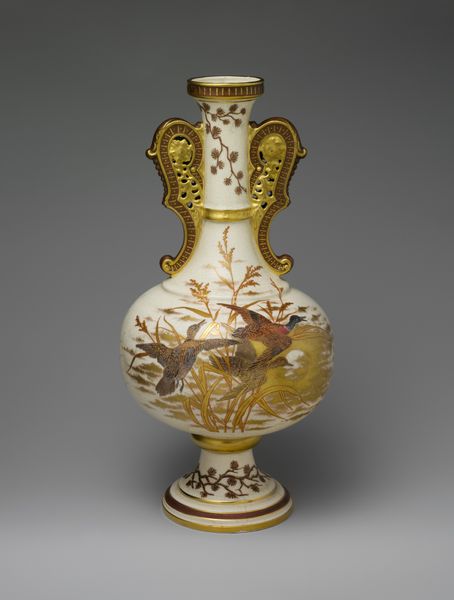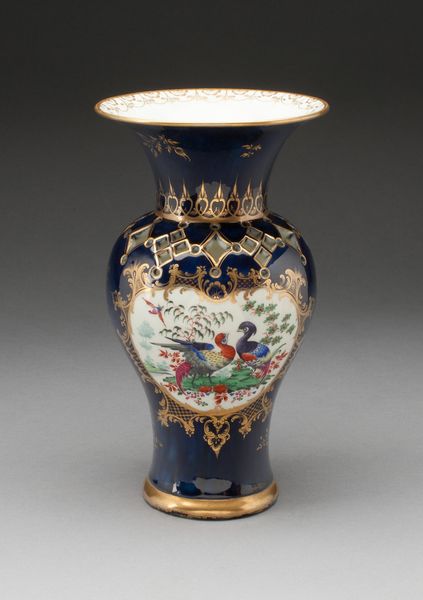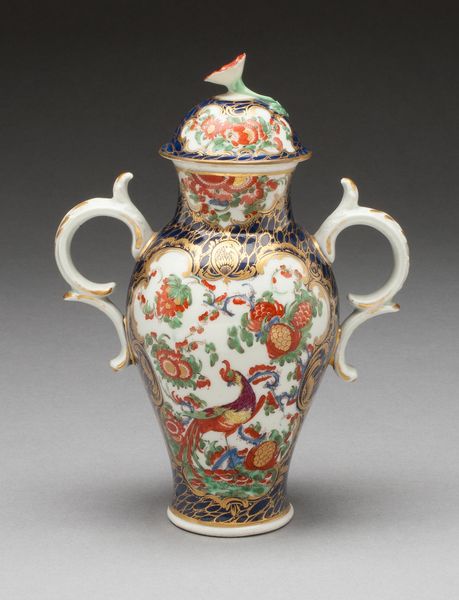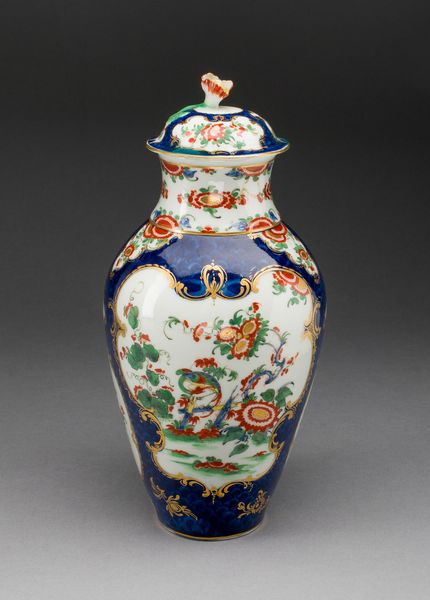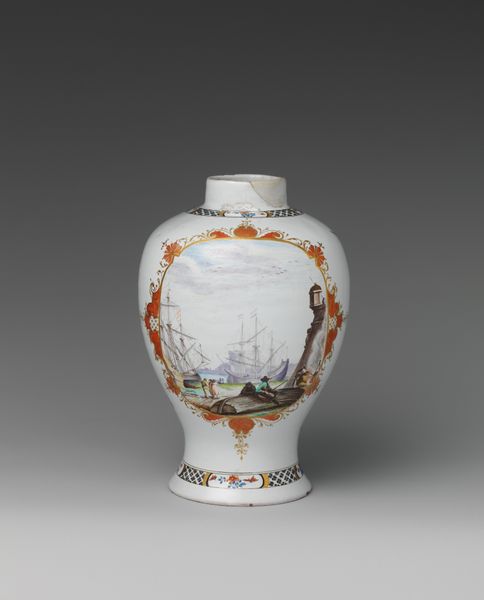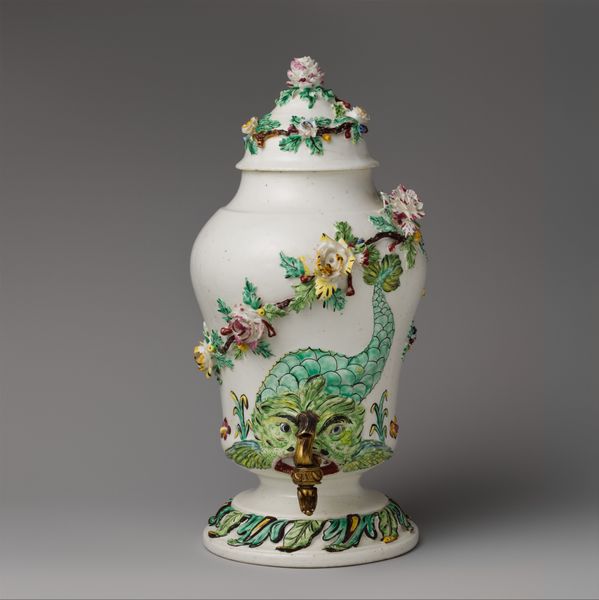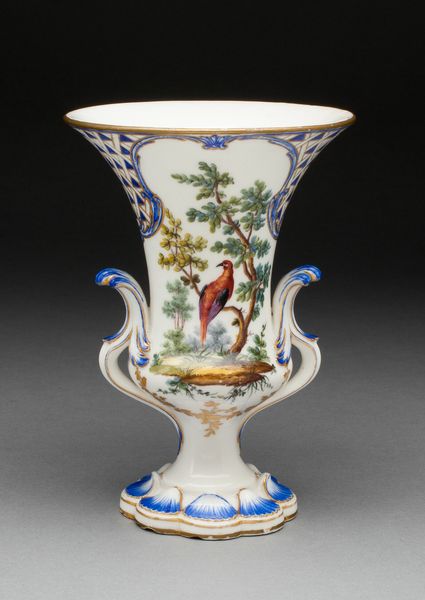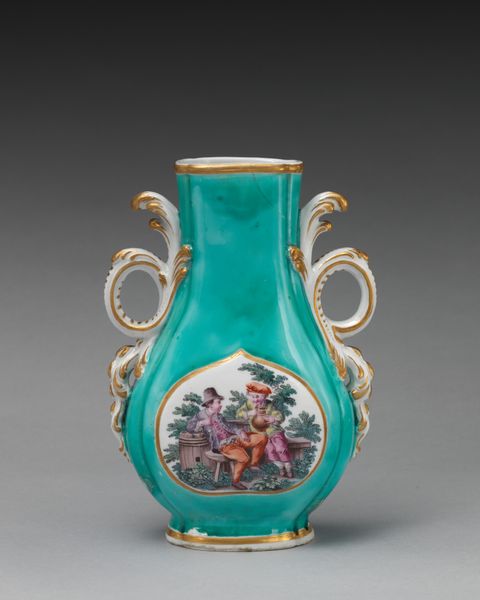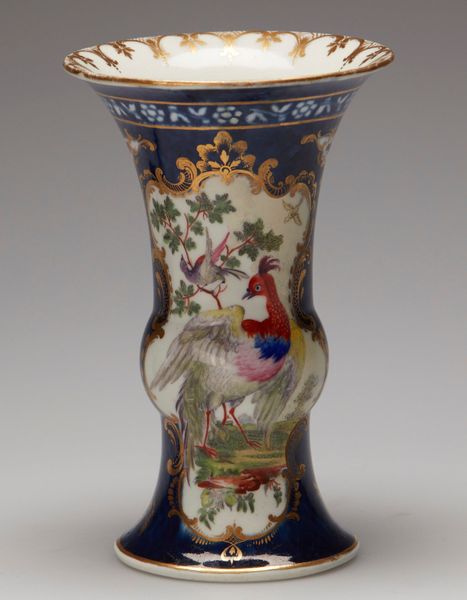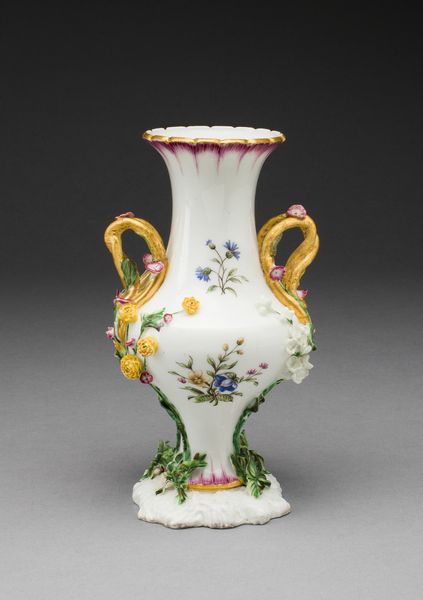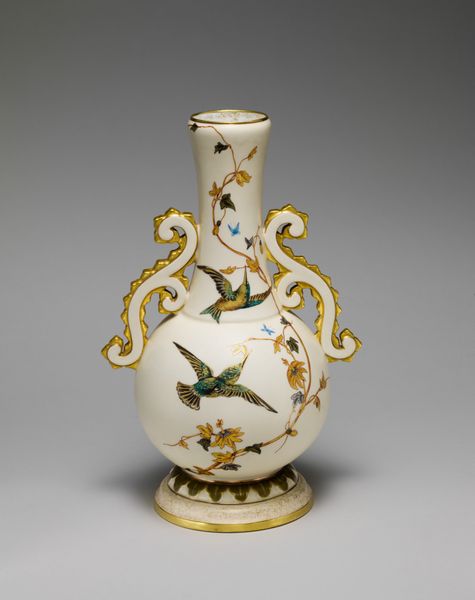
ceramic, porcelain
landscape
ceramic
vase
porcelain
ceramic
genre-painting
decorative-art
rococo
Dimensions: H. 21.6 cm (8 1/2 in.)
Copyright: Public Domain
Curator: Welcome! We are standing before a magnificent example of 18th-century decorative art: a porcelain vase attributed to Jean-Claude Duplessis, crafted around 1756. It's currently part of the Art Institute of Chicago's collection. Editor: It's stunning! That vibrant green immediately catches the eye, doesn't it? The combination of the delicate porcelain with the elaborate gilding… it speaks to a certain aristocratic opulence, even flamboyance. Curator: Precisely. The Rococo style, popular during the reign of Louis XV, embraced asymmetry, elegance, and a celebration of pleasure. Duplessis, as a leading designer at the Sèvres porcelain manufactory, was instrumental in shaping this aesthetic. Notice how the vase's form itself is dynamic, with those sculptural, almost flame-like handles. Editor: I’m drawn to the central panel, the little landscape painting. The transfer-printed scene of the child evokes ideas about the value and status assigned to youth in a quickly transforming society. But more fundamentally, how does this refined and high labor object function as both a showcase of technical ceramic mastery, and of popular printed imagery? Curator: An excellent point! This vase exemplifies the complex relationship between art, commerce, and social status during the period. Sèvres porcelain was highly prized across Europe, a symbol of wealth, good taste, and French cultural dominance. Owning a piece like this was a statement. Editor: It’s also important to remember that porcelain production itself involved grueling labor. Consider the processes needed for that incredible gilding, the expertise of the ceramic workers shaping such elaborate details out of difficult and delicate materials. These objects weren't just purchased; they were *produced* under specific labor relations in the making. Curator: Yes, and that brings up questions about the accessibility of art and beauty. While the image of childhood offered a moment of idyllic reflection, its audience was firmly situated within the upper echelons of society. Its creation was also intertwined with colonial economies and material extraction in an unequal global system. Editor: A critical reminder! And looking at it now, centuries later, helps us consider who art served then and what purpose, more broadly, its display in a public museum performs now. Curator: I agree. This vase encapsulates not only the artistry and technological achievements of its time but also reflects the power structures and social aspirations that shaped its creation and reception. It's a window into a complex past. Editor: And the ways of seeing, possessing, consuming objects, and exploiting materials across class divides of the period, ideas that have consequences that very much linger today. Thank you.
Comments
No comments
Be the first to comment and join the conversation on the ultimate creative platform.
